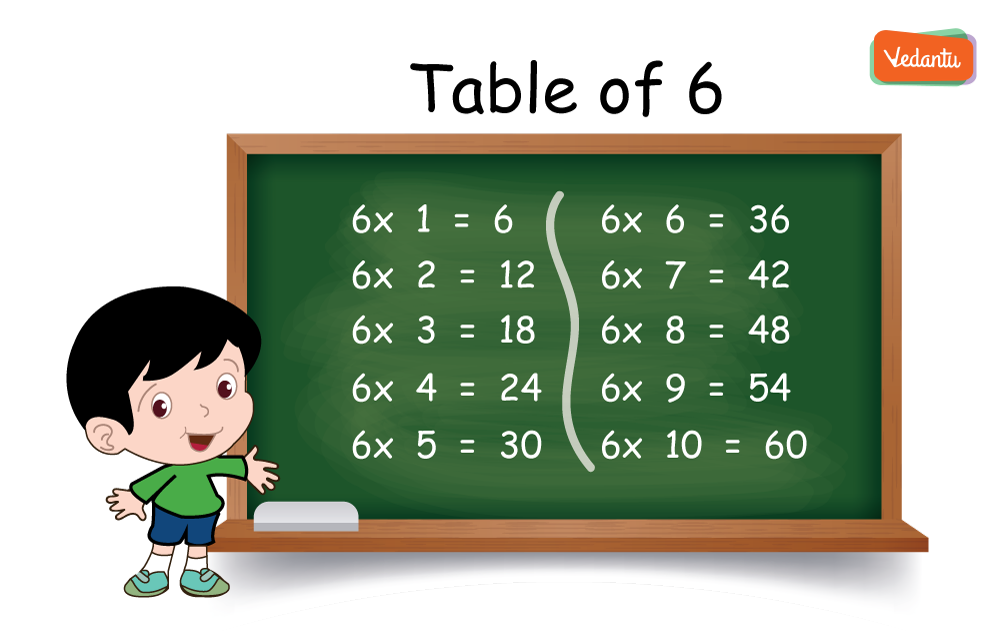How to Quickly Learn and Remember the Table of 6
FAQs on Table of 6 – Simple Multiplication Guide
1. What are the rules followed by a multiplication table of 6?
Each multiplication table follows the most basic and general rule of addition. It includes adding the same number repetitively.
For example, when we add 6 four times, we get 6 + 6 + 6 + 6 = 24, which is equivalent to 6 × 4 = 24.
2. What is the divisibility rule of 6?
Any number which is divisible by 2 and 3 both is also divisible by 6. This is because of the fact that a multiple of 6 is also the multiple of 2 and 3 both.
Recently Updated Pages
Half Past: Learn to Tell Time Easily with Examples

Limits and Continuity - Meaning, Formulas and Examples

Homogeneous Differential Equation – Definition, Formula, Solved Examples

Vectors - Introduction, Formula, Properties, Solved Examples & FAQs

Difference Between Variance and Standard Deviation

Vector Algebra

Trending pages
Ordinal Numbers 1 to 100 – Definition, Chart, Rules & Practice

Different Types of Shapes for Kids: Names, Definitions & Pictures

Numbers, Numerals, and Digits Explained for Students

Maths Quiz Questions with Answers: Practice for Class 6 to 10 Exams

Median for Even Number of Observations: Simple Guide

Maths Made Easy: Key Concepts, Formulas & Smart Practice







